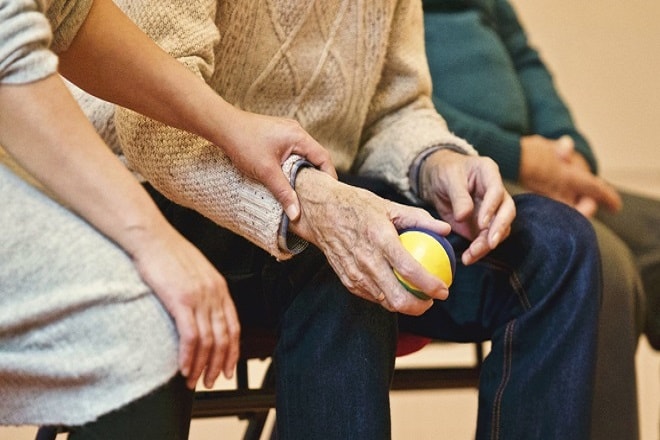Understanding Parkinson's Disease: Symptoms, Causes, and Effective Treatment Strategies
Parkinson's disease is a complex and progressive neurodegenerative disorder that severely impacts motor skills and daily life. It is characterized by the loss of dopaminergic neurons in the brain and affects millions of people worldwide. Therefore, understanding and diagnosing Parkinson's disease is crucial. This article provides a detailed analysis of treatment options and the latest research findings on this condition.

Parkinson’s disease represents one of the most common neurodegenerative disorders, affecting approximately 100,000 Canadians. This progressive condition primarily impacts movement control but can also influence cognitive function, mood, and overall well-being. Understanding the multifaceted nature of Parkinson’s disease empowers patients, caregivers, and healthcare providers to develop comprehensive management strategies tailored to individual needs.
What Are the Symptoms of Parkinson’s Disease?
Parkinson’s disease manifests through both motor and non-motor symptoms that typically develop gradually over time. The four primary motor symptoms include tremor at rest, particularly in the hands and fingers, bradykinesia or slowness of movement, muscle rigidity, and postural instability leading to balance problems. These symptoms often begin on one side of the body before progressing to both sides.
Non-motor symptoms can appear years before motor symptoms become apparent. These include sleep disturbances, constipation, loss of smell, depression, anxiety, and cognitive changes. Facial masking, where facial expressions become less animated, and changes in speech patterns, including softer volume and monotone delivery, are also common early indicators.
What Treatment Options Exist for Different Stages of Parkinson’s Disease?
Treatment approaches for Parkinson’s disease vary significantly depending on the stage of progression and individual symptoms. In early stages, healthcare providers may recommend lifestyle modifications, physical therapy, and sometimes medication to manage mild symptoms. Regular exercise, particularly activities that emphasize balance and coordination, can help maintain mobility and independence.
As the disease progresses, medication becomes increasingly important. Levodopa remains the gold standard treatment, often combined with carbidopa to enhance effectiveness and reduce side effects. Dopamine agonists, MAO-B inhibitors, and COMT inhibitors provide additional therapeutic options. Advanced stages may require surgical interventions such as deep brain stimulation (DBS) for patients who no longer respond adequately to medication.
What Factors Can Aggravate Parkinson’s Disease?
Several factors can worsen Parkinson’s symptoms or accelerate disease progression. Stress and lack of sleep significantly impact symptom severity, often causing tremors and rigidity to become more pronounced. Certain medications, particularly those that block dopamine receptors, can exacerbate symptoms and should be avoided when possible.
Dehydration, infections, and other medical conditions can temporarily worsen Parkinson’s symptoms. Environmental factors such as extreme temperatures, crowded spaces, or high-pressure situations may also trigger symptom flare-ups. Understanding these triggers helps patients develop strategies to minimize their impact on daily functioning.
How Can You Slow the Progression of Parkinson’s Disease?
While no treatment can stop Parkinson’s disease progression entirely, several strategies may help slow its advancement. Regular physical exercise, particularly aerobic activities and strength training, shows promise in maintaining motor function and potentially providing neuroprotective benefits. Research suggests that consistent exercise routines may help preserve dopamine-producing neurons.
Maintaining a healthy diet rich in antioxidants, omega-3 fatty acids, and anti-inflammatory foods may support brain health. Adequate sleep, stress management techniques, and social engagement also contribute to overall well-being and may influence disease progression. Some studies indicate that certain activities like dancing, tai chi, and boxing-inspired fitness programs provide specific benefits for Parkinson’s patients.
What Medications and Natural Remedies Help Manage Parkinson’s?
Medication management for Parkinson’s disease requires careful coordination with healthcare providers to optimize benefits while minimizing side effects. Beyond levodopa, several medication classes offer therapeutic benefits. Dopamine agonists like pramipexole and ropinirole can be particularly effective in younger patients. MAO-B inhibitors such as selegiline and rasagiline may provide neuroprotective effects alongside symptom management.
| Treatment Category | Options | Estimated Monthly Cost (CAD) |
|---|---|---|
| Medications | Levodopa/Carbidopa, Dopamine Agonists | $50-$300 |
| Physical Therapy | Individual sessions, Group classes | $80-$150 per session |
| Specialized Programs | Boxing therapy, Dance classes | $100-$200 monthly |
| Natural Supplements | Coenzyme Q10, Curcumin | $30-$100 |
Prices, rates, or cost estimates mentioned in this article are based on the latest available information but may change over time. Independent research is advised before making financial decisions.
Natural remedies and complementary therapies show varying degrees of effectiveness. Coenzyme Q10 supplements may provide antioxidant benefits, while curcumin demonstrates anti-inflammatory properties. Massage therapy, acupuncture, and meditation can help manage pain, stiffness, and stress associated with Parkinson’s disease.
Living Successfully with Parkinson’s Disease
Managing Parkinson’s disease effectively requires a comprehensive approach that combines medical treatment, lifestyle modifications, and strong support systems. While the condition presents ongoing challenges, many patients maintain active, fulfilling lives for years after diagnosis. Regular communication with healthcare providers, staying informed about new treatments, and maintaining realistic expectations contribute to successful long-term management. The key lies in developing personalized strategies that address individual symptoms while preserving independence and quality of life.
This article is for informational purposes only and should not be considered medical advice. Please consult a qualified healthcare professional for personalized guidance and treatment.



